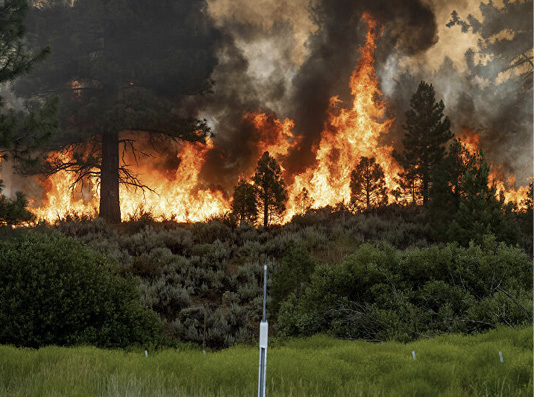In 5 charts: natural catastrophes in a changing climate
5 things secondary perils tell us about the growing risk of climate change.
Severe floods in Europe and Australia, ice storms in Texas, wildfires in California – the latest series of natural catastrophes point to a world increasingly at risk from extreme weather and climate change.
That's why Swiss Re Institute's new sigma publication puts the spotlight on secondary perils – localized weather events such as thunderstorms, flooding and wildfires which are pushing up insurance losses. Driven by factors such as urbanization and climate change, secondary perils are testing our resilience at a time when our economies and societies are already under great strain.
The call to action is clear: we must take urgent measures to mitigate climate risk and adapt to a world of more weather extremes. These five graphs offer lessons to consider.
1. Losses from weather-related secondary perils are on the rise. Climate change is a factor
Losses from secondary perils have been rising steadily, driven by urban sprawl and climate change. In the last five years, secondary perils have been responsible for most insurance losses – in 2020, they made up 71%. Yet historically, their contribution to annual insurance losses has fluctuated between 20% and 90%, without a clear trend in either direction.
2. Of all secondary perils, thunderstorms are responsible for most insurance losses
Although they rarely make the headlines, severe convective storms – commonly known as thunderstorms – have caused more insured damage than any other secondary peril over the last five decades. In 2020, 40 separate thunderstorm events in the US alone generated total insured losses of well above USD 30 billion.
3. Damage from wildfires is rising faster than from any other secondary peril – a sign of hotter, drier weather in a changing climate
Climate change is driving up wildfire losses. In the last four years alone, wildfires were responsible for almost a quarter of all secondary-peril insurance losses worldwide. This is unprecedented: before 2016, the share of this peril in losses averaged just above 3% and rarely exceeded 5–10%.
4. Globally, floods make up to a quarter of secondary peril losses. Shifting rainfall patterns are contributing to a growing risk
In Europe, South America and Asia, flooding was the main secondary peril. Globally, flooding represents 16% of all secondary peril insured losses in 2011–2020. If floods from hurricane- or typhoon-induced precipitation and storm surge are included, the share increases to 20–25%. This makes it the number two contributing secondary peril of the last decade, after thunderstorms.
5. Don't forget primary peril risk. Since primary and secondary perils are affected by the same risk trends, future peak losses could grow significantly
In years like 2020, secondary perils have been in the spotlight. But this is no reason to believe that peak primary-peril loss events will not occur again. Since 1970, losses from both peril groups have been accumulating more or less in sync. And while secondary peril losses have accumulated faster in the last five years, history shows that it can take just a few peak-event strikes to demonstrate the very large magnitude of losses that primary peril risk poses, as in the case of Hurricanes Katrina, Wilma and Rita in 2005.



Comments are closed.